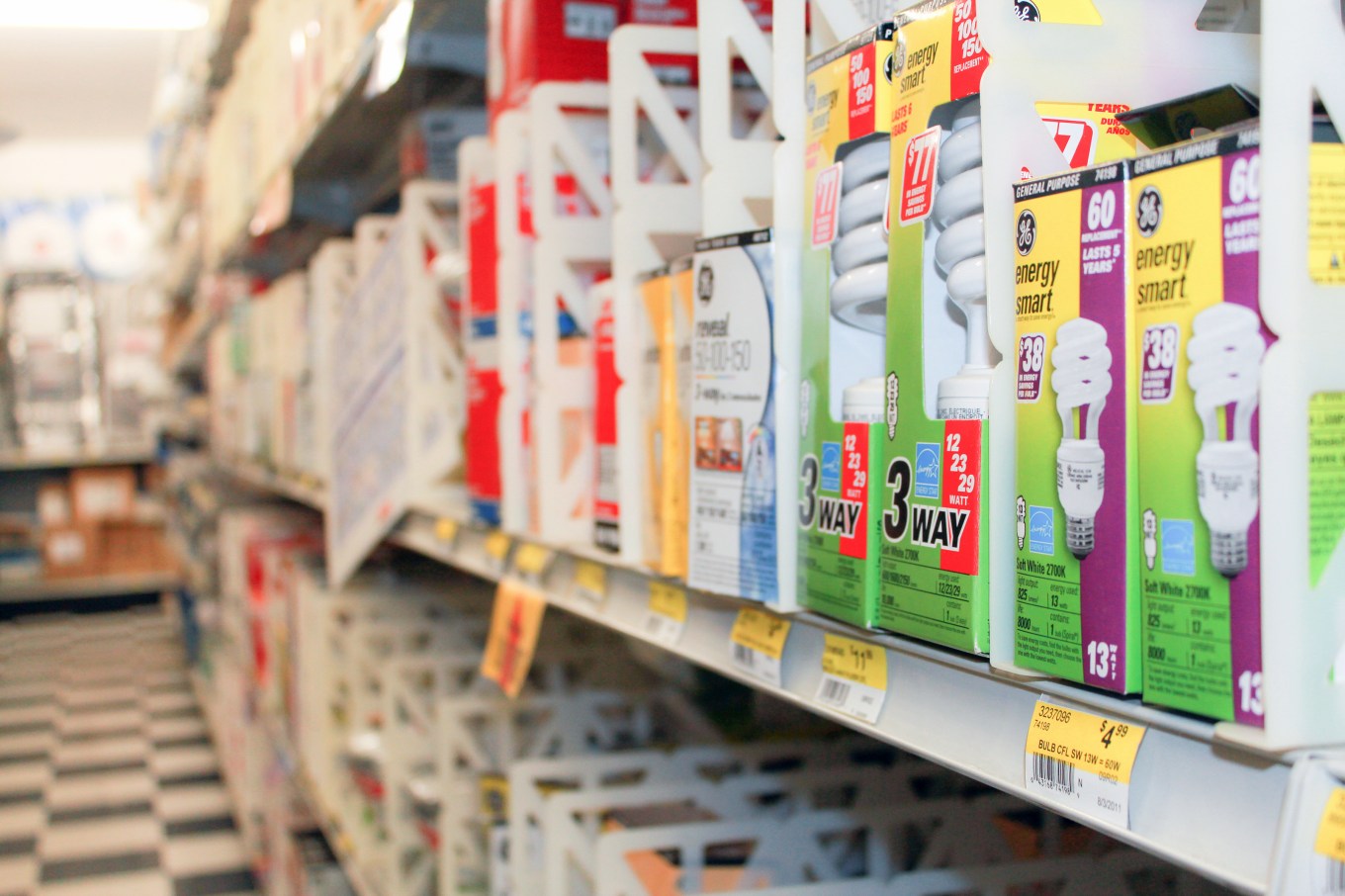Light bulb shopping used to be as simple as turning on a light switch. Today, it means weighing priorities for cost, energy efficiency, and aesthetics.
Since you’re probably replacing bulbs one fixture at a time, here are some best-bet picks for each type.
Table and Floor Lamps: Halogen Incandescent
- Light shines in all directions, providing a warm glow.
- Dimmable.
- Looks most similar to the traditional incandescent.
- Uses 25% to 30% less energy than the incandescent.
Table and floor lamps look best with omnidirectional light. “You probably don’t want a big bright spot in the middle of your lampshade,” says Jeff Harris of the nonprofit think tank Alliance to Save Energy. “You’re looking for a nice, warm glow.”
Halogen incandescents provide that, and are good with dimmers. You may be able to find a dimmable CFL, but it’s common to experience humming or flickering at low light levels.
For non-dimming lamps, CFLs are great if you can find a color temperature you like.
- Color temperature is measured on a warmness (candlelight) and coolness (blue sky) scale. LEDs, CFLs, and halogen incandescents all come in a wide range of color temperatures.
- Buy covered globes or A-lamps — bulbs shaped like old-fashioned incandescents — rather than spirals if you can see the bulb and aren’t a fan of the spiral look.
- Otherwise, just go with halogen incandescents and don’t sweat the fact that CFLs are more energy-efficient than halogens. Your still saving over a traditional incandescent and the glow is pretty.
So why not LEDs? LEDs point light in a single direction, although new LED-containing A-lamps are designed to compensate for that by using prisms or special coatings. But all that extra technology makes them expensive — probably not worth it for your bedside lamp, which isn’t a big energy hog anyway.
Recessed Ceiling Lights (Kitchens, Family Rooms): LEDs
- Energy efficiency is key in high-use areas.
- 80% energy savings over incandescents.
- Bulb life (up to 50,000 hours) much longer than CFLs.
- Shine light a single direction — rather than glowing.
- Brighter than halogens or CFLs.
Overhead recessed lighting in the kitchen or family room gets lots of use, so energy efficiency is a big consideration; plus, you need bulbs that point light in a single direction so the light actually escapes the can or fixture.
LED reflector lamps, the flat-topped bulbs typically used as floodlights or spotlights, are designed to shine light in a single direction. And that means you’ll get a brighter look with less energy output than CFLs or halogens.
New conversion kits let you put LEDs into your old can fixtures designed for screw-in bulbs.
A word of caution: LEDs don’t dim well unless they’re connected to a wall dimming switch specifically designed for them. You can get LED-compatible dimmers at big-box stores starting at around $30. Same goes for CFLs.
If you do decide on CFLs or halogen incandescents for a warmer quality of light:
- Buy reflector-lamp style bulbs, not A-lamps or globes, so the light isn’t trapped inside the can.
- If you have multiple cans, you can probably get away with a lower-wattage halogen incandescent reflector bulb and save energy while still having plenty of light.
Bathroom Vanity Fixture: Halogen Incandescents
- Better for showing color and texture than CFLs or LEDs.
Lighting over the bathroom vanity is a highly personal lighting choice, especially when there are women in the house. If the light isn’t flattering to your skin tone or makes it hard to apply makeup, you’ll be dissatisfied.
That’s why halogen incandescents, with their pleasing light, are a good bet.
However, if the bathroom where you primp is a high-traffic area and you’re concerned about energy use, experiment with CFLs in a warm color temperature and get a separate lighted mirror for your beauty routine.
Stairwell Light: LEDs
- Inconvenient fixtures are a good place to use long-lasting LEDs.
How many times are you willing to drag out a ladder and change the bulb in a tough-to-reach fixture? Take advantage of LEDs’ long life by putting them in spots you don’t want to revisit often:
- Fixtures hanging in stairwells
- Track lighting suspended from a cathedral ceiling
- Cabinets
- Ledges
- Tray ceilings
- Recessed areas
Outdoor Floodlight: Halogen Incandescent
- For security and efficiency, use fixtures with daylight/occupancy sensors.
- Since outdoor lights aren’t used often, not worth investing in LEDs.
- CFLs don’t come on easily in cold weather.
- CFLs don’t last as long as advertised when turned on and off frequently.
If you don’t want to get new fixtures with sensors, you can buy a sensor attachment that screws into each socket.
Rarely Used Fixtures: Low-Cost Bulbs
- Opt for what’s easy on your wallet.
- Use the most energy-efficient bulbs, such as LEDs, in most-used fixtures.
If the total yearly hours for the fixtures in your closets, dining room chandeliers, and the naked bulb in your attic are low, go cheap.
Related:
